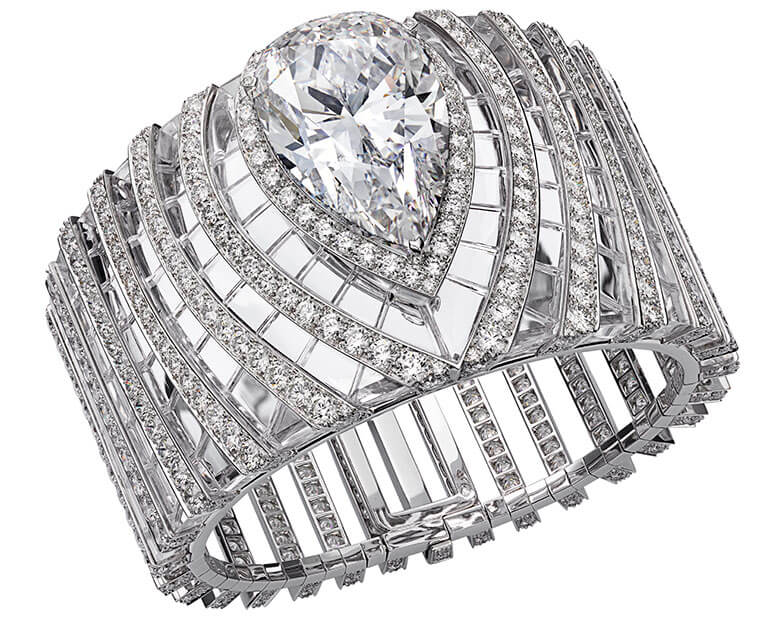Commenting on the future of the Richemont Group in a recent interview to HH Magazine, Richard Lepeu, joint chief executive of a company whose portfolio of brands extends to the furthest reaches of the luxury galaxy, delivered an emphatic analysis: “We are number one in fine jewellery, a more significant market than fine watches as well as a highly fragmented one, where established names such as ourselves are set to win market share.” With Cartier, Piaget and Van Cleef & Arpels within its fold, Richemont certainly has what it takes. A study published in September by Barclays bank confirms this view. It forecasts that Richemont’s jewellery segment will see organic growth in the region of 15% over the coming years, compared with 7% for its watches business; a reversal of trends already evidenced in the latest figures published by Richemont.
"Proactive strategies"
It should come as no surprise, then, that luxury giants have focused their latest big-ticket acquisitions on the jewellery sector. After the takeover of Bulgari by LVMH in 2011 for close to USD 6 million, it was Harry Winston’s turn to change hands. In January this year, Swatch Group announced it had bought the “king of diamonds” for USD 1 billion. More recently, in July, Kering (formerly PPR) entered the fray when it acquired Italy’s Pomellato. One of Europe’s last remaining independent jewellers with 2012 revenues of EUR 146 million, it is valued at between EUR 300 and 350 million. Prior to this, in December 2012, Kering, which also owns Boucheron, snapped up Qeelin, a Chinese jewellery brand with more modest sales in the region of EUR 30 million but fast-growing in the Asian markets.
As Richard Lepeu observes, the watch and jewellery markets are very different in size. According to financial analysts Eurostaf, worldwide jewellery sales are worth an estimated USD 100 billion, nine-tenths of which are accountable to non-brand names. In comparison, writes Vontobel bank, sales of timepieces amount to almost USD 40 billion. Luxury jewellery and fine jewellery have returned to healthy growth since 2010, notes Eurostaf in a recent survey. This upturn has benefited every region including Japan, although Asia (excluding Japan) is the main driver for growth. The slowdown observed in 2012 should be viewed in the light of exceptional results in the previous two years. There is also significant potential for growth within the market. Indeed, jewellery remains luxury’s least mature segment, given the large amount of non-branded products. For Eurostaf, jewellery is where luxury companies and groups should be training their sights with proactive strategies that will “reshuffle the deck” in a market traditionally dominated by specialists. The current wave of mergers and acquisitions, says Eurostaf, should continue.
Watchmaking's strength lies also in the belief that a luxury timepiece has to be by a brand.
"Watches and jewellery work along the same lines"
Interviewed by wthejournal.com at the recent Louis Vuitton Cup in San Francisco, Hamdi Chatti, Director of Watches and Jewellery at Louis Vuitton, has a similar message: “Watchmaking’s strength lies also in the belief that a luxury timepiece has to be by a brand. In jewellery, on the other hand, there are many different creations but few brands. Brands make up just 10% of the market. (…) The jewellery market is bigger than the watch market, but both work along the same lines: like watches, jewellery is about emotions, passion, products and image, the difference being that jewellery always uses precious metals. In my opinion, jewellery has the potential to develop in the same way watchmaking has over the last thirty years.”
A glance at figures published by the Federation of the Swiss Watch Industry shows that exports of Swiss mechanical watches went from CHF 5.8 billion in 2002 to CHF 15.3 billion in 2012. An almost threefold increase in ten years that bodes well for high-end jewellery and hints at the new opportunities emerging in the luxury market. Nick Hayek, chief executive of Swatch Group, is first to agree. He predicts that Harry Winston’s sales are set to quadruple within three to five years, to more than CHF 1 billion. Distribution will certainly be one factor; prestige is definitely another.















